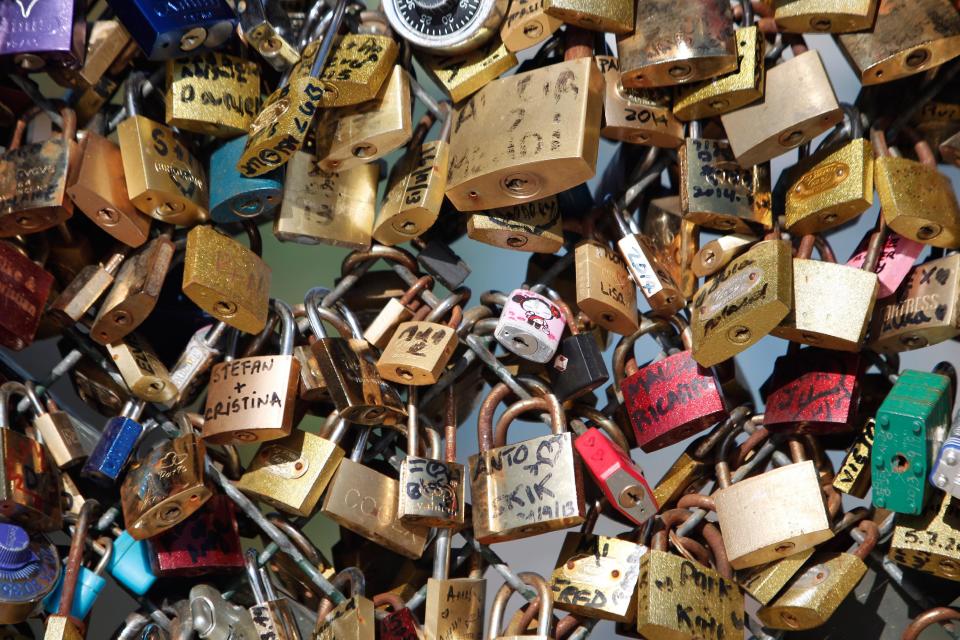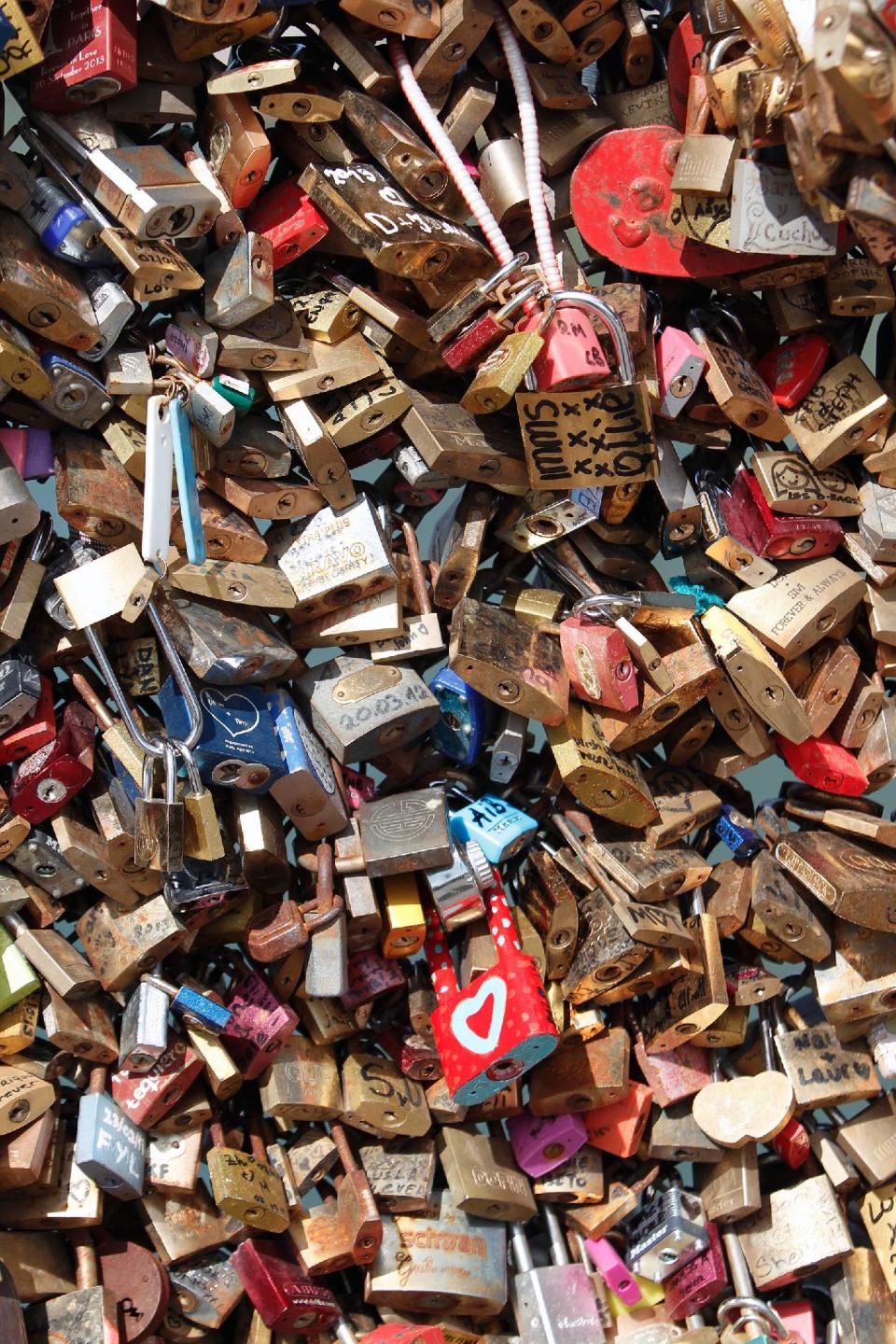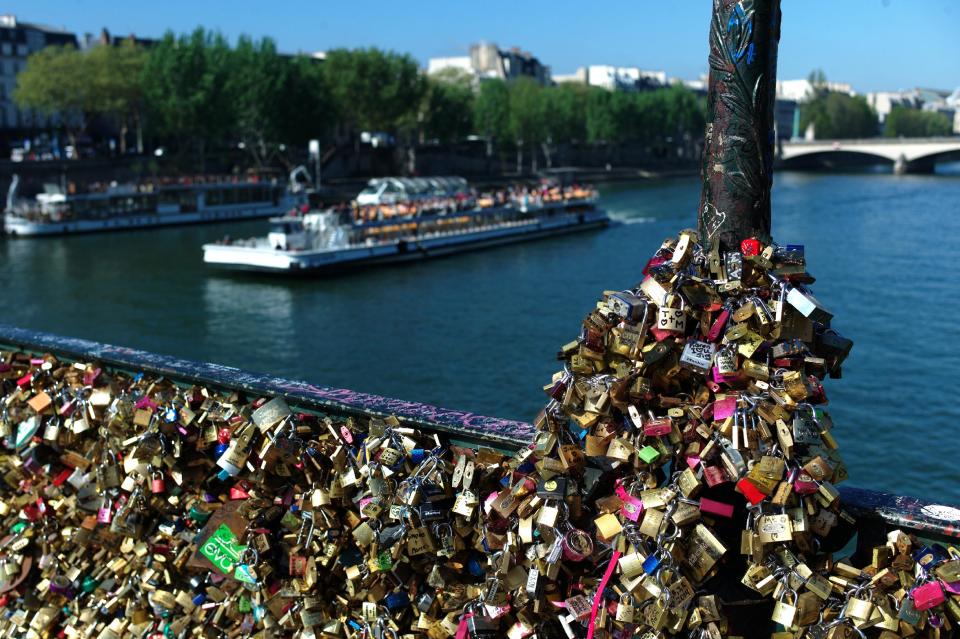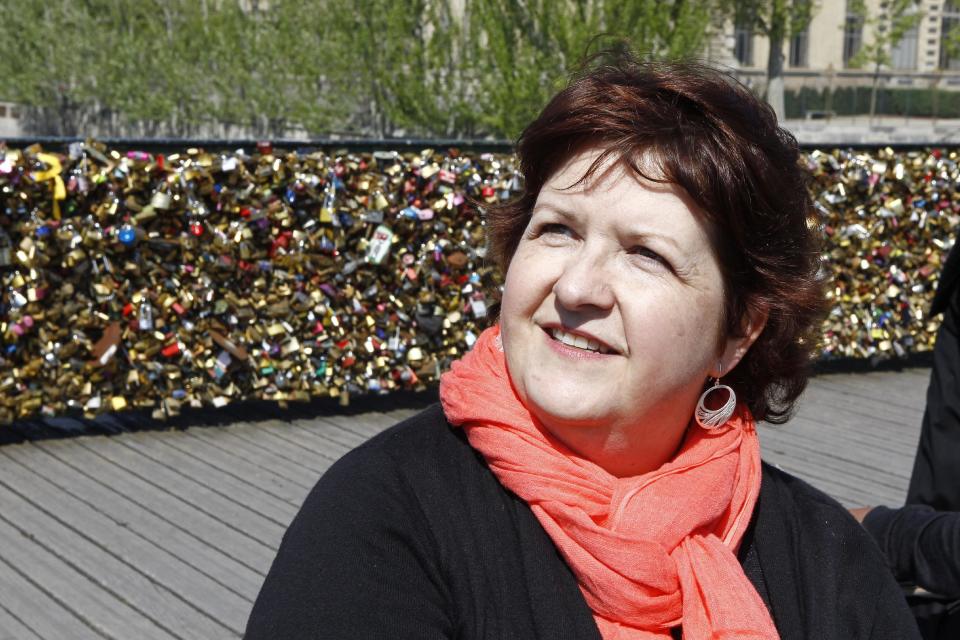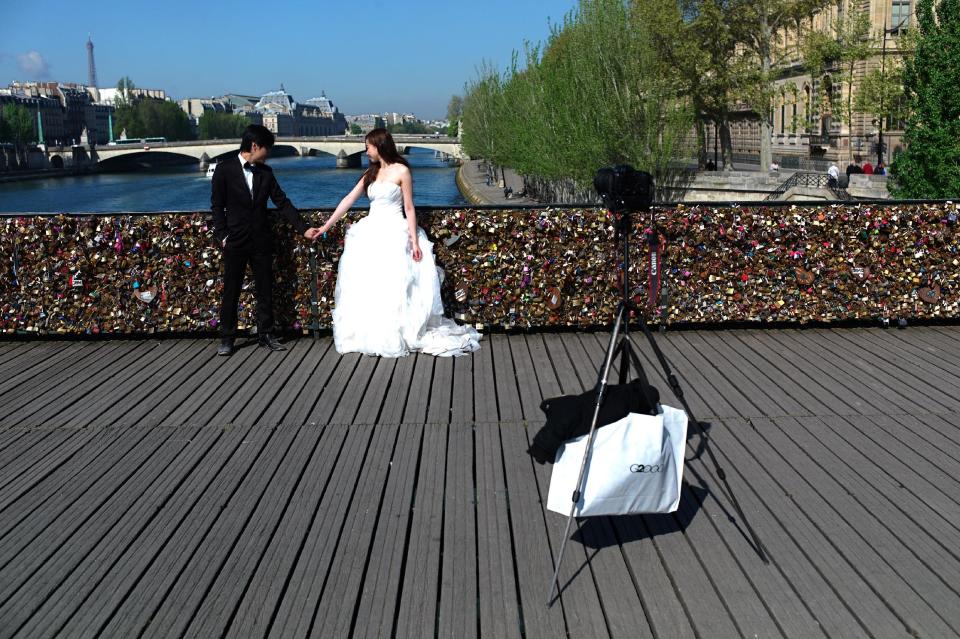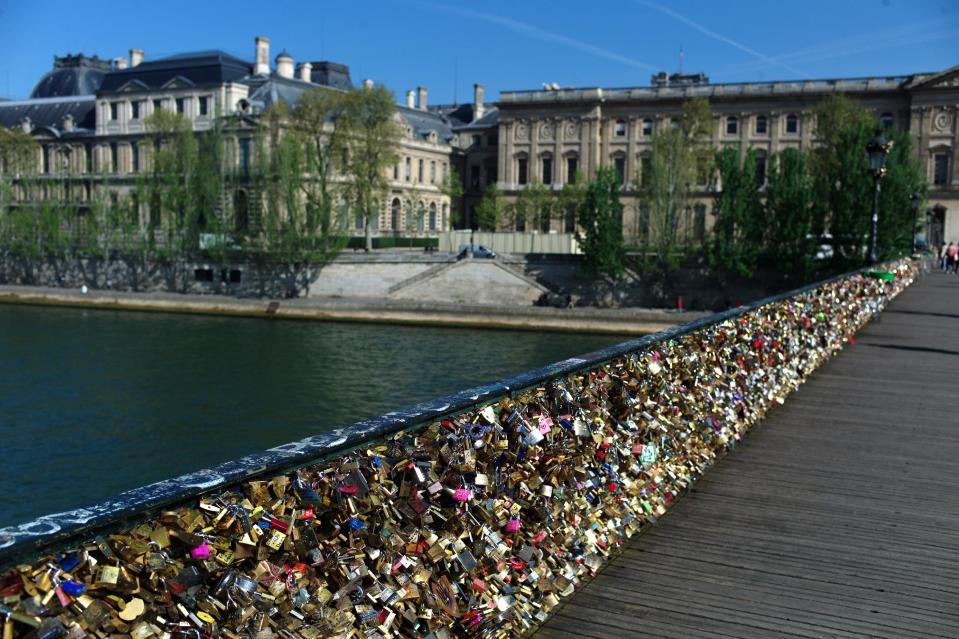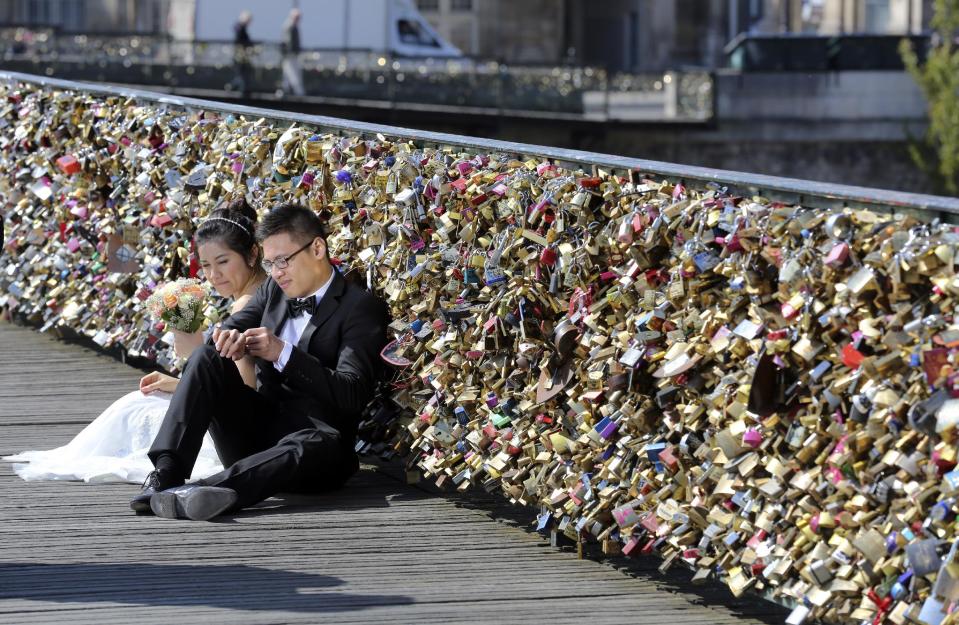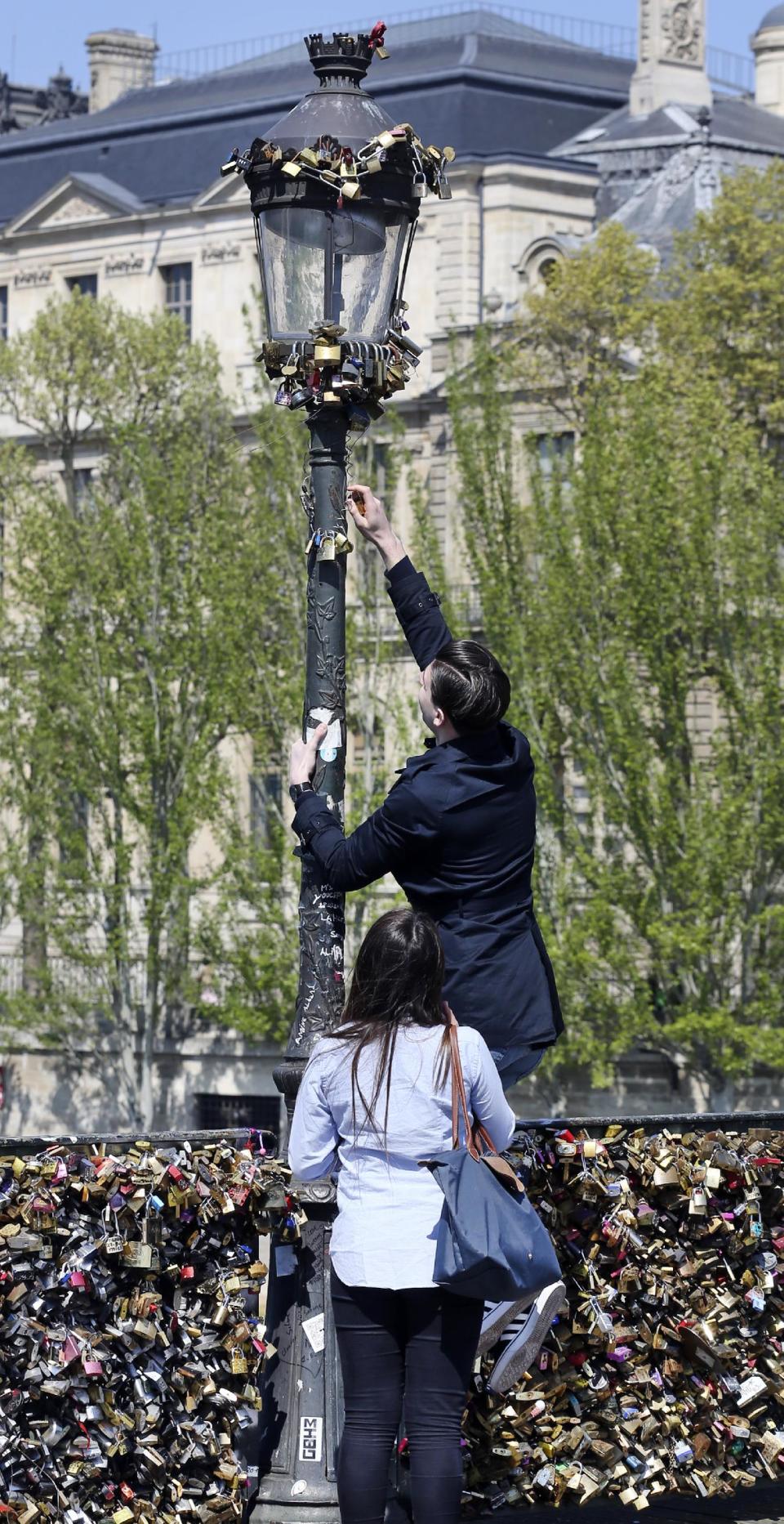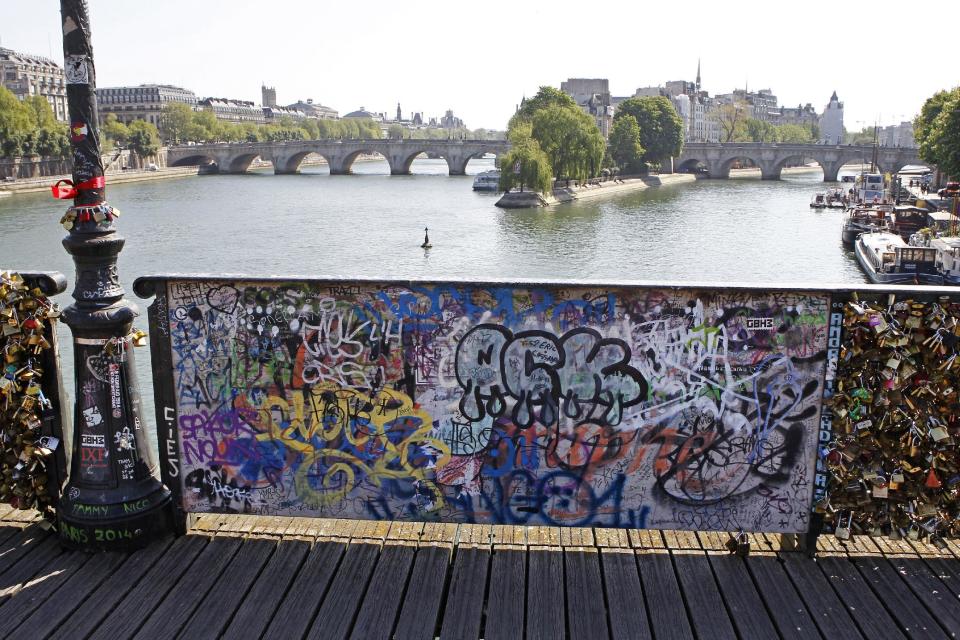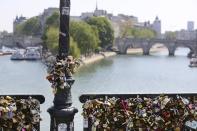Aesthetics-minded Americans decry Paris love locks
PARIS (AP) — Without love, what is Paris? And yet what is a trip to Paris without unfettered vistas of the Eiffel Tower, the Louvre or Notre Dame from bridges over the River Seine?
Concerns about scenery are clashing with sentimentality in this reputed City of Love over a profusion of padlocks hitched by lovers on bridges as symbols of everlasting "amour" — locks that some decry as an eyesore.
Part of a global phenomenon, the craze has grown in Paris recently and now two American women who call Paris home have had enough. They've launched a petition to try to get the city's mostly laissez-faire officials to do something. City leaders say they're exploring alternatives.
In urban myth, it goes like this: Latch a padlock to a bridge railing and chuck the key into the water as you make a wish. Some say the tradition has its roots in 19th-century Hungary. Others cite a recent Italian novel as the inspiration.
Campaigners Lisa Taylor Huff and Lisa Anselmo are denouncing what they call a padlock plague, warning of alleged safety risks and arguing the craze is now a cliche. Their petition, at www.change.org , says "the heart of Paris has been made ugly" by the locks and the Seine has been polluted by thousands of keys.
Plus, they say, tourists shouldn't be fooled: The locks aren't forever. City crews regularly remove them as they replace damaged structures. One strained rail weighing 500 kilograms (1,100 pounds) was recently taken down, a Paris official said.
But their campaign is a hard sell in a metropolis facing myriad problems from air pollution to a housing crunch, and where a polemic over padlocks in mostly tourist areas is a distant worry for many Parisians. French media has given the issue scant attention.
Plus, city authorities know well that tourism is a major money maker and have no desire to dampen Paris' reputation as one of the world's most romantic retreats.
The government of Anne Hidalgo, Paris' new mayor, is contemplating how to respond. Her predecessor generally sided with freedom-of-expression advocates. Options range from fines to signs encouraging tourists to be responsible. Enforcement in a city where bikers regularly run red lights could be tricky.
For now, it's the status quo — no restrictions.
"It's spontaneous. And it shows tourists and Parisians are attached to the symbol of Paris as the City of Love," said a City Hall spokeswoman, who declined to be identified by name because of protocol.
"We don't foresee banning them, but we're thinking about another form — an alternative — that tourists and Parisians can use to display their love in a way compatible with respect for city heritage," she said.
Anselmo's and Huff's top complaint is the Pont des Arts, a historic pedestrian bridge near the Louvre with incomparable views of the Seine's Ile de la Cite island. Locks also cling en masse on a bridge near Notre Dame Cathedral and some have even cropped up on the Eiffel Tower.
"We were tourists ourselves once. We're not heartless, celibate people with no love in our lives. It's because we love the city," said Huff. "Do we want this to be the city of locks?"
As the native of Hackettstown, New Jersey, spoke on the Pont des Arts, the bridge shimmered in the spring sun from thousands of rusting locks on its rails. New ones were going up nearly by the minute.
"We really can't blame the tourists for doing what they think they're allowed to do," said Huff, a writer who also works booking visitor reservations. "If tourists aren't going to be responsible by themselves, it's up to the city to set the limits."
What qualifies as an eyesore depends on the beholder. Some historians once felt the Pont des Arts itself — whose origins date to Napoleon's wish in 1804 for a footbridge — impeded views of the Louvre, City Hall's website says.
The petition has garnered more than 5,200 signatures so far, mostly by French people, Huff said. She and Anselmo make their case on www.nolovelocks.com , but some comments posted there show not all are favorable to their crusade.
The city official said municipal architects have examined and generally discounted the alleged risk that bridge railings might not withstand the weight and could topple over onto tour-boat gawkers.
And now the locks have become an attraction in themselves.
"That's the other sad part: People used to come here to look at the view," Huff said.
"They just see the wall of metal," she said of young children too short to see over the railings. "Is that going to be their memory of Paris?"
On one recent day, Chinese women snapped photos of the Eiffel Tower from the bridge, then posed for one with the locks as a backdrop. A young woman cried with joy and wiped her eyes as a kneeling suitor shouted in English, "She said 'Yes'!" to the applause of other tourists. A vendor quickly folded up a sheet showing his padlocks for sale and fled as four police officers approached.
Huff claimed the illegal vendors sometimes damage railings, prompting city crews to replace them for safety reasons — thus creating more space for the locks they sell.
Other cities have found ways to cope with the lock mania. In Russia, artificial "trees" offer a dedicated padlock area. A mayor in Florence, Italy, reportedly has threatened fines for those who put locks on the famed Ponte Vecchio.
Some have suggested lighter plastic locks, while a Paris website in English suggests that lovers can exchange "e-locks" instead.
Two years ago, contemporary artist Loris Greaud took about 130 kilograms (285 pounds) of locks off the Pont des Arts, melted them and cast a series of sculptures called "Tainted Love."
When asked about the anti-lock campaign, tourists showed a mix of understanding and exasperation.
"We saw on the Internet that this was one of the things to do in Paris," said Anne O'Connor, a 42-year-old government worker from Crofton, Maryland. She said a lock she put up with her son and husband symbolized "love, family, commitments."
But she conceded the explosion of locks "might be seen as an eyesore."
Some questioned why the Americans wanted to get in the way of love.
"How could she?" said Serkan Up, a 19-year-old security officer from London, after he and his girlfriend Claudia Foley put up a padlock that they had brought from home.
The bridge "looks gold from a distance ... for us it's special," Foley said. "This is the City of Love."
___
Follow Jamey Keaten on Twitter at https://www.twitter.com/jameykeaten


